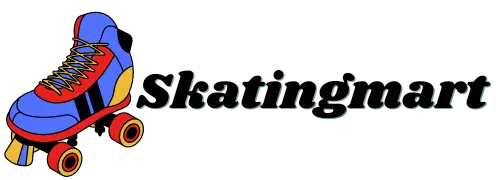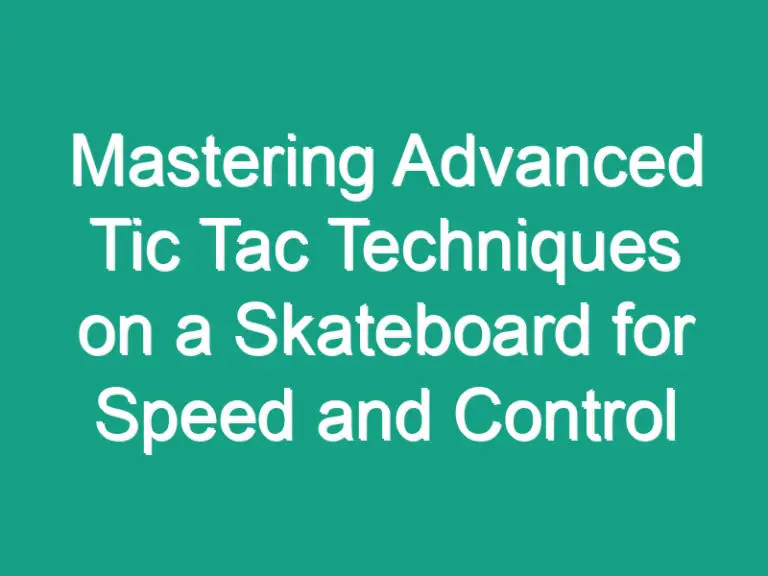
Skateboarding is all about mastering cool tricks, and the revert is one move that can take your skills to the next level. In this guide, I’ll walk you through the steps to perfecting the revert on your skateboard. Whether you’re a beginner looking to add flair to your rides or a seasoned skater aiming to refine your technique, mastering the revert is essential.
As an experienced skateboarder, I’ve spent countless hours perfecting my tricks, and the revert is one that never fails to impress. From foot placement to body positioning, I’ll share my expert tips to help you nail the revert with style and confidence. Get ready to elevate your skateboarding game and impress your friends with this fundamental trick in your arsenal.
Key Takeaways
- The revert in skateboarding involves a quick 180-degree turn that requires timing, shoulder movements, and proper foot placement for stability.
- Practice is crucial for mastering the revert trick and building confidence in your abilities.
- Foot placement is key for a smooth and controlled revert, with the front foot angled towards the nose and the back foot positioned closer to the tail.
- Body positioning techniques like shoulder alignment, hip rotation, knee flexion, and arm movement play a vital role in achieving precise rotations.
- When practicing the revert, focus on commitment, visualization, body positioning, and seeking feedback to improve your skills.
- Tips for perfecting your revert include regular practice, starting slow, focusing on body positioning, visualizing success, seeking feedback, and using video analysis for adjustments.
Understanding the Revert
Mastering the revert in skateboarding involves a combination of skill, technique, and style. When executing a revert, it’s crucial to understand the mechanics behind this impressive trick to ensure smooth transitions and precise movements. The revert, also known as a pivot, is when a skater performs a quick 180-degree turn at the top of a ramp or on flat ground, adding flair to their routine. This trick requires control, balance, and finesse to pull off seamlessly.
Key points to understand about the revert:
- Timing: Executing the revert at the right moment is essential for a clean rotation.
- Shoulder Movements: Rotating your shoulders first can help initiate and guide the rest of your body through the trick.
- Foot Placement: Proper positioning of your feet on the skateboard plays a significant role in maintaining stability while performing the revert.
- Practice: Consistent practice is crucial to mastering the revert and building confidence in your abilities.
By understanding these fundamental aspects of the revert, you can progress from beginner to an intermediate skater with ease. Embrace the challenge, stay determined, and watch your skills evolve as you perfect this classic skateboarding move.
Foot Placement for the Revert
When it comes to mastering the revert on a skateboard, foot placement is key. Here’s how I position my feet for a smooth and controlled revert:
- Front foot: Placing my front foot just behind the front bolts of the skateboard helps me maintain stability and control during the revert. It’s essential to keep this foot slightly angled towards the nose of the board.
- Back foot: For the back foot, I position it closer to the tail but not all the way to the edge. Having the back foot closer to the tail gives me leverage to pivot smoothly during the revert. Angling the back foot slightly towards the tail also assists in initiating and completing the rotation.
- Balance: Ensuring even weight distribution between both feet is crucial for maintaining balance and executing a fluid revert. By keeping my weight centered and using my feet to steer the board, I can achieve the rotation with precision.
By focusing on proper foot placement and maintaining control throughout the revert, I’ve been able to enhance my skills and elevate my skateboarding technique. Practicing this fundamental aspect consistently has significantly improved the quality of my reverts and overall performance on the board.
Body Positioning Techniques
When it comes to mastering the revert trick in skateboarding, body positioning plays a vital role in achieving smooth and precise rotations. Here are some key techniques that I have found to be effective in improving revert skills:
- Shoulder Alignment: Ensuring that my shoulders are parallel to the board helps me generate the necessary torque for a successful revert.
- Hip Rotation: Engaging my hips in the rotation process allows for a more fluid and controlled movement when executing the revert trick.
- Knee Flexion: Maintaining a slight bend in my knees throughout the trick helps absorb impact and provides stability during the rotation.
- Arm Movement: Using my arms to guide the direction of the revert enhances the overall balance and coordination required for a clean execution.
By incorporating these body positioning techniques into my revert practice sessions, I’ve been able to enhance my overall performance and consistency on the board. Remember, mastering the revert trick takes time and dedication, but with the right techniques, you can progress towards achieving your skateboarding goals.
Practicing the Revert
When Practicing the Revert, I focus on repetition and consistency to improve my skills. It’s crucial to start slow and gradually increase speed to maintain control throughout the trick. Video analysis of my attempts helps me identify areas for improvement.
- Commitment: Fully commit to each attempt to overcome fear and hesitation.
- Visualization: Mentally rehearse the movements and visualize a smooth execution.
- Body Positioning: Ensure proper shoulder alignment, hip rotation, knee flexion, and arm movement.
- Feedback: Seek feedback from experienced skateboarders to fine-tune your technique.
By incorporating these practicing strategies, I’ve seen significant progress in my revert trick. It’s essential to stay patient and persistent in honing this skill.
Tips for Perfecting Your Revert
Mastering the revert on a skateboard requires dedication and focus. Here are some tips that have helped me perfect this trick:
- Practice Regularly: Consistent practice is key to improving your revert technique.
- Start Slow: Begin at a comfortable speed before gradually increasing your pace to maintain control.
- Focus on Body Positioning: Pay attention to your body positioning throughout the trick to ensure stability.
- Visualize Success: Mental imagery can help you perfect the movement pattern of the revert.
- Seek Feedback: Don’t hesitate to ask for advice from experienced skateboarders to identify areas for improvement.
- Use Video Analysis: Recording your attempts allows you to review and analyze your technique for adjustments.
Conclusion
Mastering the revert trick in skateboarding requires dedication and persistence. By following the tips outlined in this article, I’ve shared valuable insights on how to perfect this challenging maneuver. Remember, practice makes perfect, so keep honing your skills and pushing yourself to improve. With the right techniques and mindset, you’ll soon be executing flawless reverts with confidence and style. Stay focused, stay determined, and most importantly, enjoy the journey of mastering this exciting trick. Keep shredding!
Frequently Asked Questions
How important is regular practice for mastering the revert trick in skateboarding?
Regular practice is crucial for mastering the revert trick in skateboarding. It helps improve muscle memory, balance, and coordination, leading to more consistent and controlled execution of the trick.
Why is it recommended to start the revert trick at a comfortable speed and then gradually increase?
Starting the revert trick at a comfortable speed allows you to establish a solid foundation and build confidence before pushing your limits. Gradually increasing the speed helps you progress while maintaining control and stability throughout the trick.
Why is body positioning essential for successfully executing the revert trick?
Proper body positioning is crucial for stability and control when performing the revert trick. It helps distribute weight effectively, maintain balance, and ensure smooth transitions during the trick.
How can visualizing success help improve movement patterns for the revert trick?
Visualizing success enables you to mentally rehearse the movements and transitions involved in the revert trick. This technique can enhance muscle memory, refine technique, and increase confidence when performing the trick.
Why is it beneficial to seek feedback from experienced skateboarders when learning the revert trick?
Seeking feedback from experienced skateboarders provides valuable insights, tips, and corrections to help you improve your technique and overcome challenges with the revert trick. Their expertise can help you progress faster and avoid common pitfalls.
How can video analysis contribute to mastering the revert trick in skateboarding?
Video analysis allows you to review and assess your technique, timing, and positioning when performing the revert trick. By identifying areas for improvement and making necessary adjustments, video analysis can help you refine your skills and achieve greater proficiency in the trick.

Hi, This is Roasalin, I have loved Skating since my early childhood days, and here I share my experiences and tips for beginners who want to turn into pro skaters. I hope you find it useful. you can contact me here






